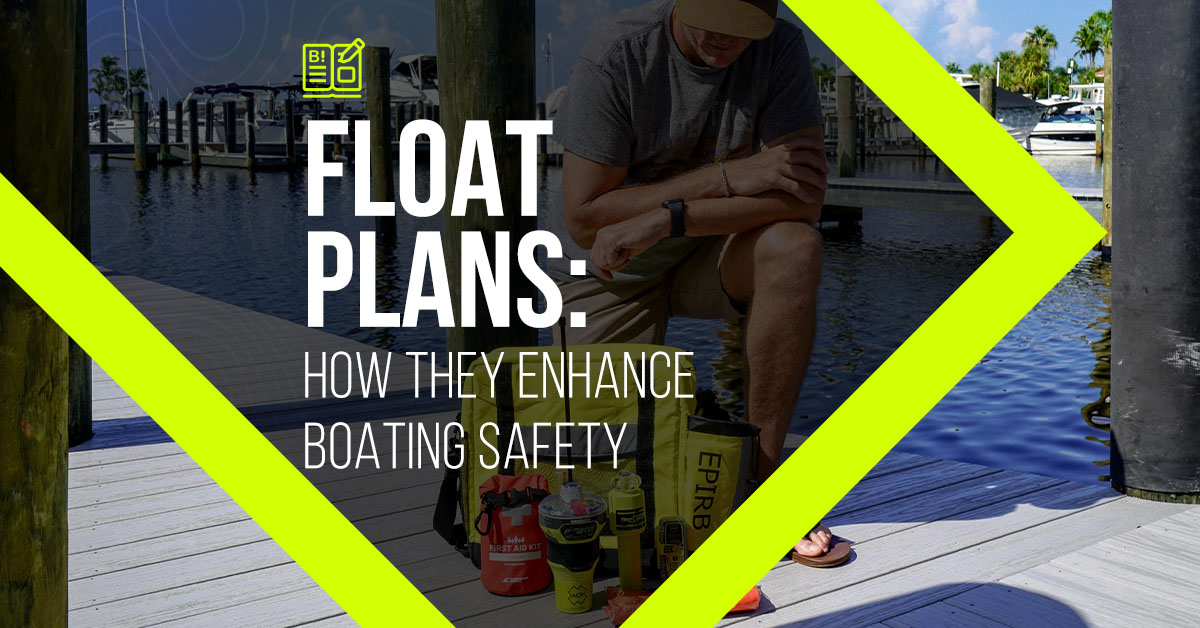
The Importance of Float Plans: How They Enhance Boating Safety
Posted on September 9, 2024
When it comes to boating, safety should always be the top priority. Whether you’re embarking on a day trip along the coast, heading out for a weekend fishing adventure, or planning a longer journey offshore, one tool that often goes overlooked but is vital for safety is a float plan. Although it can be quite a simple document, the importance of float plans should not be underestimated. This simple document could be the key to keeping you and your crew safe on the water. Here’s why float plans are essential and how they can enhance your overall boating safety.
What Is a Float Plan?
A float plan is essentially a roadmap of your trip. It details your intended route, the names of your passengers, and the timeline of your journey. A completed float plan is left with a trusted person onshore, so in the event of an emergency, authorities can use the information to track your location and begin a search.
At its core, a float plan provides critical information that could save lives by ensuring help can find you if something goes wrong.
Key Elements of a Float Plan
While each float plan can vary, it generally includes the following information:
- Boat Details: This includes the type, size, and registration number of the vessel.
- Crew Information: Names, contact details, and any pertinent medical conditions of everyone on board.
- Itinerary: Your planned route, departure time, stops along the way, and estimated time of return.
- Communication Equipment: What types of communication devices you have, such as VHF radios, satellite phones, or EPIRBs (Emergency Position Indicating Radio Beacons).
- Safety Gear: Information on the safety gear you’re carrying, such as life jackets, flares, and emergency supplies.
This comprehensive overview helps first responders quickly assess the situation and decide how to proceed in the event of a search and rescue.
Importance of Float Plans – Why are they Important?
- Quick Emergency Response
In an emergency, every second counts. If you become stranded, lose contact, or face an unforeseen event like severe weather, a float plan ensures that people onshore will know where you are and when to expect you back. This gives rescue teams a head start, potentially saving valuable time in a life-threatening situation.
- Enhanced Communication
A float plan acts as a communication lifeline. By knowing your intended route and timeline, friends or family members can promptly alert authorities if you’re overdue. With the location and details provided, rescuers can narrow down search areas, maximizing efficiency and improving the chances of a successful rescue.
- Unexpected Weather or Mechanical Issues
Boating can be unpredictable. Sudden weather changes or mechanical failures can quickly turn a fun day on the water into a dangerous situation. A float plan is a fallback. Even if you lose communication, the float plan provides authorities with enough details to pinpoint your possible location.
- Increased Peace of Mind
Knowing that someone onshore is aware of your trip can give both you and your loved ones peace of mind. Even for experienced boaters, accidents can happen, and having a plan in place means that someone will start looking for you if you don’t return as scheduled.
- Professional and Responsible Seamanship
Creating and sharing a float plan demonstrates responsible boating. It reflects preparedness and a commitment to safety, showing that you take both your well-being and that of your passengers seriously.
How to Create and Share Your Float Plan
Creating a float plan doesn’t have to be a cumbersome process. There are several templates available online, or you can simply draft one yourself. The U.S. Coast Guard has resources on float plans available, including a link to download a PDF fillable float plan, at the following location: https://uscgboating.org/recreational-boaters/floating-plan.php
Once it’s completed, ensure that a reliable person onshore has a copy of your float plan. This person should be someone who understands the importance of float plans and is ready to act if you don’t check in on time.
Several boating apps now offer easy ways to create and share float plans digitally, making the process even more convenient. ACR Electronics also offers technology that enhances your float plan, such as beacons that can directly communicate your location to rescue services.
In conclusion, the importance of float plans should not be underestimated as creating a float plan is one of the most important steps you can take to ensure your safety while boating. It is a simple but effective way to safeguard against potential risks and ensure help can find you quickly in an emergency. Whether you’re a seasoned sailor or a weekend boater, creating a float plan should always be part of your pre-trip checklist. Remember, on the water, preparedness saves lives. Taking the time to create and share a float plan could make all the difference in ensuring you and your passengers return safely from every adventure.